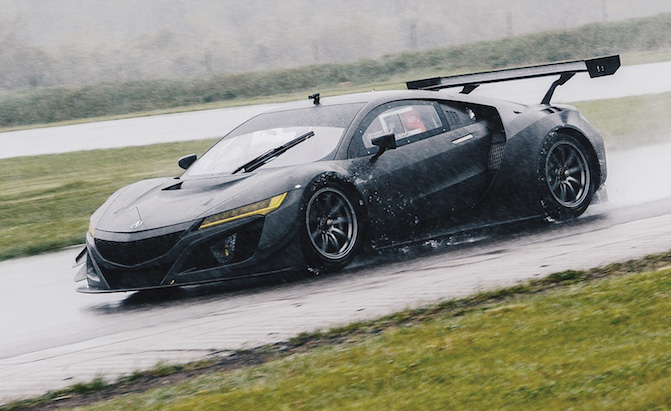There’s more to the 2017 Acura NSX than its stunning good looks and twin-turbo hybrid powertrain.
Most car shoppers don’t pay attention to a vehicle’s aerodynamics. But most car shoppers aren’t in the market for a 2017 Acura NSX, and those who are might be interested to learn just how the new sports car’s aerodynamics work. The Japanese automaker employed a concept called “Total Airflow Management” on the new NSX, using computational fluid dynamics and wind tunnels in the U.S. and Japan to create maximum downforce while minimizing drag.
Tasked with the job was Honda aerodynamicist Thomas Ramsay and his team, which focused on supporting component cooling and aerodynamic performance while contributing to even more dynamic styling. The team used computational fluid dynamic simulations and testing of 40-percent scale models in Honda’s advanced wind tunnel facility in Ohio to optimize the intricate body shapes. Nearly everything on the exterior of the NSX serves a function, from the intake grilles to the exhaust vents, shaped and proportioned to reduce aerodynamic drag, create downforce, maximize cooling and efficiently dissipate unwanted heat.
Read our Acura NSX Review here
The development team found that generating approximately three times as much downforce at the rear relative to the front of the car would provide the optimal downforce distribution for both high-performance and day-to-day driving. After all, the 2017 Acura NSX isn’t meant to be just kept in a garage for weekend outings. Helping generate that downforce in the rear is a rear diffuser that works together with the rear spoiler and tail light slots. Interestingly, unlike other supercars, the NSX achieves its high level of downforce without the use of active aerodynamic bodywork or other devices.
“In many ways, with the design of the all-new Honda NSX, you literally have form following function, so this was a really exciting vehicle to work on as an aerodynamicist,” says Thomas Ramsay, the Aerodynamics and Cooling Project Leader on the new Honda supercar.



Leave a Reply